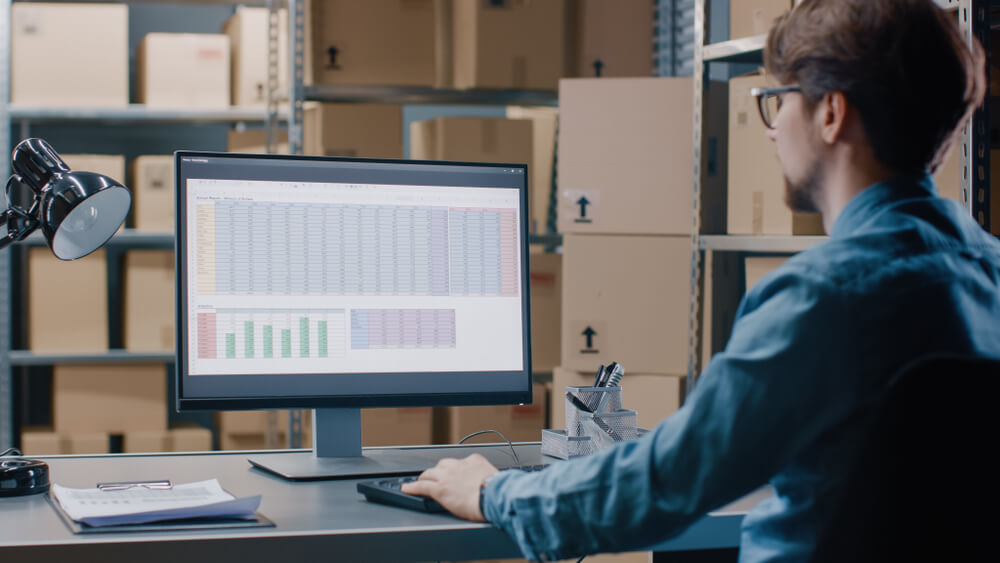Shopify Inventory Management Basics for SMEs
Setting up a business in Shopify is an easy thing to do. Properly managing that business, however, takes work. Here are some techniques and apps for effective Shopify inventory management.
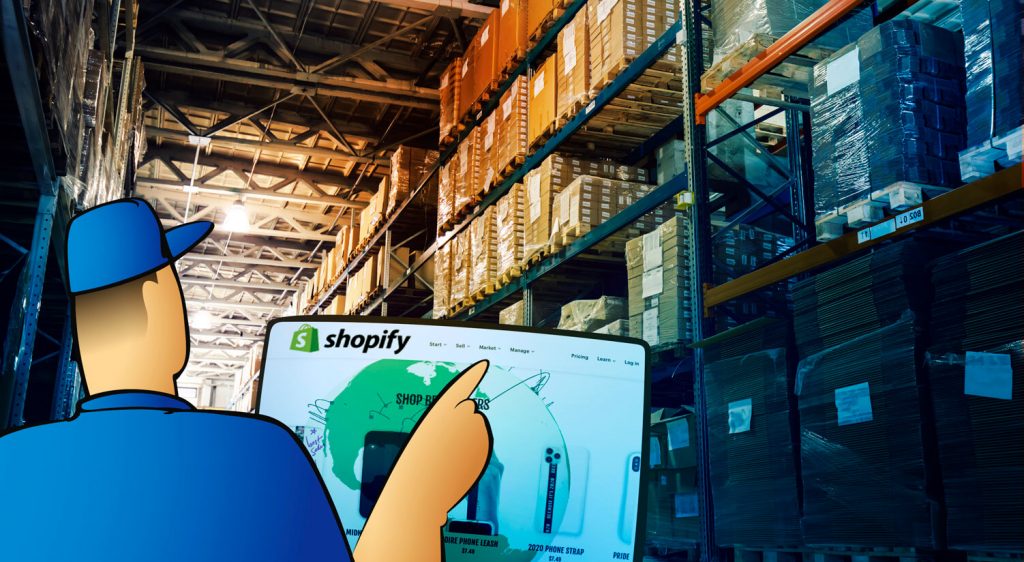
You can also listen to this article:
Even though the growth rate of e-commerce had been slowing down for a couple of years already, the pandemic caused a new period of explosive expansion in the online retail industry. In 2021, e-commerce sales are expected to reach 4.9 trillion USD, which is more than double than what it was four years ago.
While the lockdowns helped e-commerce sales soar, it also created an environment where people felt that it was time to set up a business of their own – either because they were left unemployed amid the pandemic, or they found themselves with a lot of free time on their hands.
Whatever the cause, the creation of new businesses reached a record high in the US in 2020.
And worldwide, over a million companies active online, new or old, sell their merchandise on the retail platform Shopify – an easy to set up, easy to use, easy to manage e-shop solution for businesses of all sizes.
While in many cases the shops on the platform experience steady, manageable growth, some go through rapid changes in both demand and inventory. Whatever the case may be, it is smart to have some inventory management techniques up your sleeve when you work as a Shopify merchant.
We have created a basic, actionable inventory management guide that anyone could use, regardless of whether they resell or make their own products. For manufacturers, however, we have also compiled a selection of Shopify integrations that would make their lives a lot easier.
Why is Shopify Inventory Management Important?
Inventory management means storing, handling, tracking, analyzing, ordering, and dispatching materials and merchandise. As such, it is the cornerstone of any business that sells physical products.
As a lot of money is usually tied up in inventory, it is up to the inventory manager to make sure that the money put into inventory is not lost due to excessive storage costs, obsolete or expired products, or bad handling practices. The inventory manager also has to make sure to stock as much inventory as needed, and as little as possible, ensuring a healthy inventory turnover and avoiding overstocking and stock-outs.
If inventory management is done well, it can lead to a reduction in business expenses and noticeable improvements in your cash flow.
Also read this comprehensive piece about Inventory Management.
Shopify Inventory Management: 9 Basic Steps
This is the basic checklist you should follow when you set up your shop and products in Shopify. If you want to get more in-depth knowledge and recommendations about Shopify Inventory Management, be sure to read the whole article.
Define your Stock Keeping Units
Stock Keeping Units (SKUs) are one of the building blocks of an effective inventory management system – both for your physical stock, and the digital system that handles it. Each kind of item, article, material, part, product, ingredient, assembly – or however else you refer to the goods you handle – has a unique SKU number. This code is the basis for neatly tracking it, its information, the inventory levels, and everything related to it.
You can, for example, use this free SKU generator.
Create your products
When you have created a Shopify store, you can start adding products for sale in the Products section. Just click “Add product”, enter the product name, add a detailed description of your products, attach images, define the pricing, save the SKU number, barcode number, etc. Add all the details, which define your products and are important for successful sales via Shopify and for delivery to the customers. Products can later be edited or deleted at any time.
For products that have variations (size, color, etc.), you can add parameters by clicking on the “Add a variant” option.
If you have to add many products that are similar, but for which the variant option does not apply, you can duplicate the product that was created first, and then just modify the name and necessary details to create a new product. This could save a lot of time that could otherwise be wasted on unnecessary data entry.
In the product’s “Product status” section, you can choose whether to make the product active in the shop or not. Availability can also be scheduled in case you have some seasonal products. In this section, you can also manage the sales channels of the product.
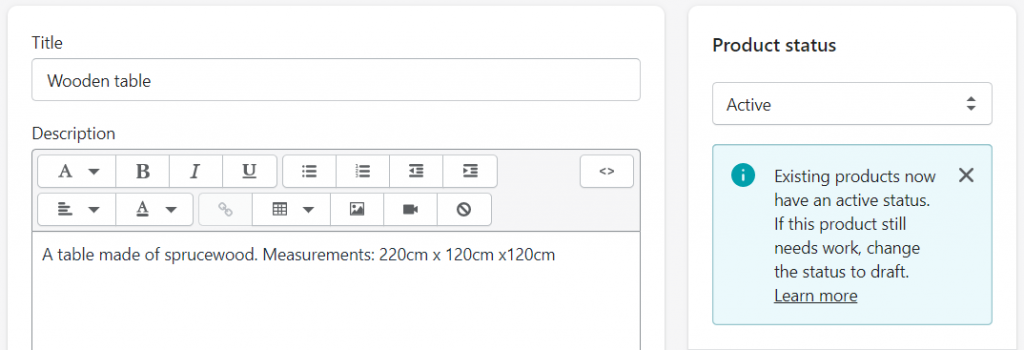
Create product collections
You can create product categories to make shop navigation easier for your customers (e.g. shoes for men, women, boys, girls; item types such as dinner tables, coffee tables, chairs, etc.). You can create and edit your product collections on the “Collections” page of your Shopify admin.
Shopify also allows to set up automated collections so that when certain conditions are met by a new product, it is automatically included in the collection. A manual collection only includes the products that you have specifically added to it. Manual collections are good for setting up flash sales or special collections.
Set up inventory tracking
When you open up a shop on Shopify, the system does not automatically turn on inventory tracking – it needs to be done manually for each product. Check the “Track quantity” option in an item’s Inventory section, set the quantity of the item, and save. Now the system automatically tracks the inventory levels of your products and updates them with each sale. You can update an item’s quantity manually anytime. You can also choose whether to stop or continue selling a product when it is out of stock.
Hide products that are out of stock
When a product is sold out, you can use Shopify’s automated collections functionality to hide the products from your shop visitors. To do it, you need to change the collection conditions so that the Inventory stock for the products is greater than 0. Now the system will hide the out-of-stock goods until they are replenished. It is also possible to use a separate inventory management app for that.
Manage purchase orders
The “Transfers” section of Shopify Inventory is for recording and tracking purchases, and to update your inventory when your POs have been fulfilled. When you have sent and confirmed a purchase order with your supplier, create a transfer record for it. When the goods are received, mark the order as completed or use the “Receive items” option to record a partial arrival. Use a third-party inventory and procurement management app if you want all of those processes to be automated.
Use ABC (+XYZ) analysis
ABC analysis is an inventory management technique based on the Pareto principle (the 80/20 rule). According to the principle, 80% of your business is related to 20% of your inventory items. The analysis categorizes your SKUs into groups A, B, and C according to their consumption value, i.e. their priority for your business. This allows you to be more mindful of more important items and assign more resources to them.
Shopify has its own ABC analysis module. It does not, however, have the capacity for XYZ analysis, which is an extension of the ABC technique. The XYZ part of the process also accounts for fluctuations in the consumption of the SKUs, giving you more accurate, better results.
Check out this Quick Guide to ABC and XYZ analysis.
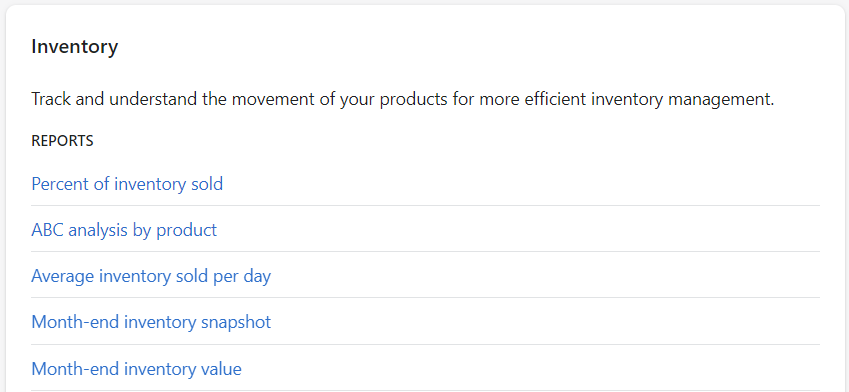
Use other inventory management techniques
Although Shopify already provides merchants with the basic necessities for managing their stock, there are many inventory control techniques out there that could be very helpful in ensuring that your inventory turnover remains high while inventory costs remain low. You can use the following techniques manually, but they are often included as functionalities in inventory management software:
Safety Stock
Safety stock is a buffer of products or materials companies keep in order to avoid stock-outs. By having a safety stock of your SKUs, you can continue doing business even when disruptions occur in the supply chain.
Read more about Safety Stock.
Reorder Point
Reorder point is the set level of inventory which should trigger a purchase order to replenish stock. For example, when there are 100 units of an SKU in stock, and the ROP is 20 units, the order should be placed when 80 units have been sold.
Read more about Reorder Point.
Kitting
Product kitting means creating bundles of your products and selling them as kits, often with a small discount. That way you can simplify your inventory and move more products with less hassle. For example, if you produce furniture, instead of offering chairs and a dinner table separately, you could bundle it up into a set of four chairs and a dinner table. This way, customers will feel more inclined to buy the whole set from you, not cobble one together by buying chairs from you and a table from another carpenter.
Read more about Kitting.
Use Shopify Apps
As you may notice, the inventory management module of Shopify is quite basic – it is not nearly enough to manage a growing business. And Shopify knows that – this is why they have started partnerships with hundreds of third-party software vendors that have created specialized solutions for different types of problems.
In the Shopify App Store, you will find single-functionality inventory management solutions like kitting and bundling apps, or reorder point notification apps. But you will also find business management suites like MRP and ERP systems.
If you are taking your business seriously, you should consider an all-in-one app to manage everything from sales to inventory to finances. Especially if you make your own products – in which case, the production planning and scheduling capabilities of an MRP system are indispensable.
Read more about Production Planning and Production Scheduling.

5 Useful Shopify Inventory Management Apps
Although Shopify is a great platform for selling your products, it does not offer many of the functionalities needed by more demanding merchants, or those that make their own products.
While Shopify does have an inventory management system already integrated within their system, it only works if your inventory is very simple. Which is not the case in larger businesses, and in most manufacturing.
Manufacturers need functionalities such as Bill of Materials management, production planning and scheduling, automatic material booking, procurement planning, etc., that are integrated with the inventory management module, simplifying and consolidating data management across the whole business. And for that, they need to look elsewhere.
Fortunately, Shopify has partnered up with hundreds of third-party software vendors that offer additional functionalities to the merchants – Shopify Apps. These are integrations between Shopify and other software, allowing users to take advantage of both the spectacular commerce platform of Shopify, as well as other great solutions.
MRPeasy
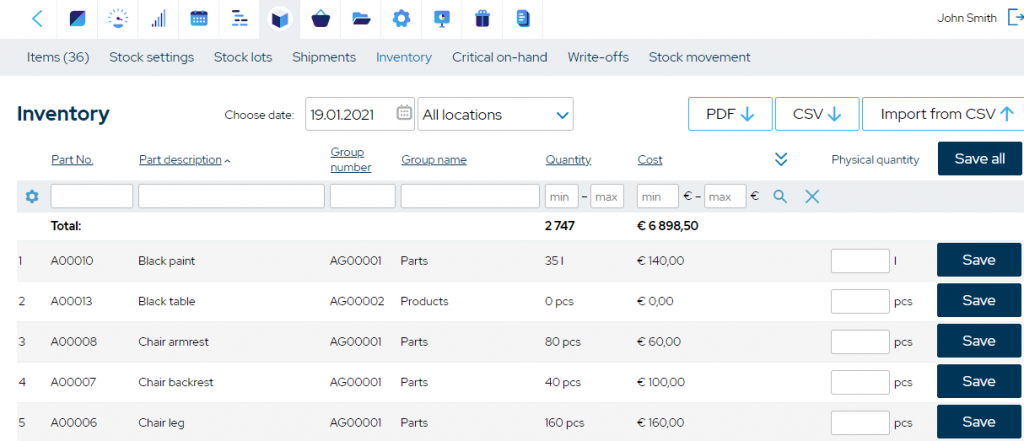
MRPeasy is a simple yet powerful ERP system for small and medium-sized manufacturers and distributors. It offers seamless management of production, bills of materials, stock, customers, purchases, finances, and HR.
It centralizes data throughout the company and allows for the automation of a lot of business management processes while syncing up sales and inventory with Shopify. From customer orders, it is possible to automatically schedule manufacturing operations according to materials availability, vendor lead time, and available production capacity.
When the products are ready for shipment, it is reflected in Shopify as well. Stock is synchronized, and production costs and sales are reflected in the accounting module.
The system also allows for analyzing business performance, creating both material and product kits, managing barcodes, and many more inventory management tools.
MRPeasy starts from $49/month. This makes it one of the most affordable solutions with this level of functionality on the market.
Tier
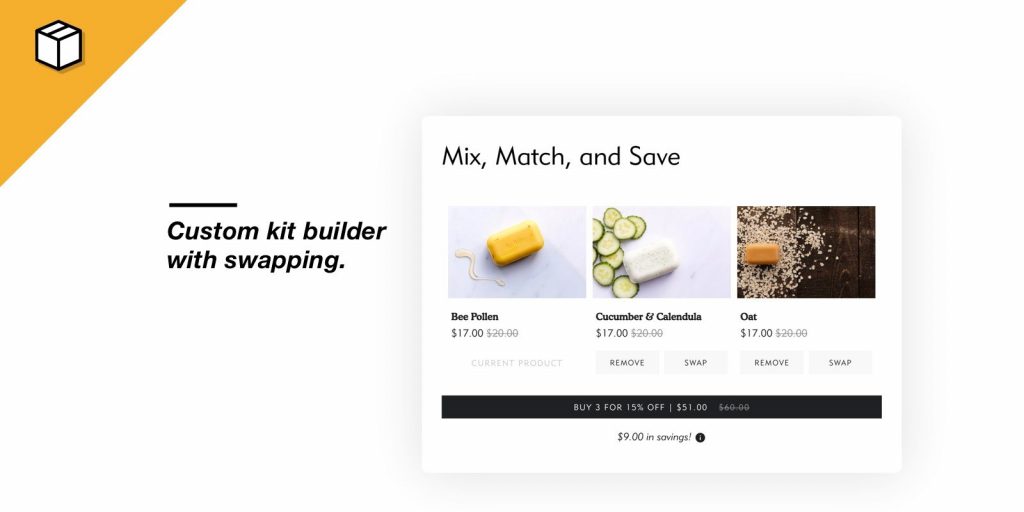
Tier allows you to create product bundles and kits with dynamic discounts, which will simplify inventory management and increase average order value. It is fully customizable and very easy to use. It also has a free plan available.
Quick Scan
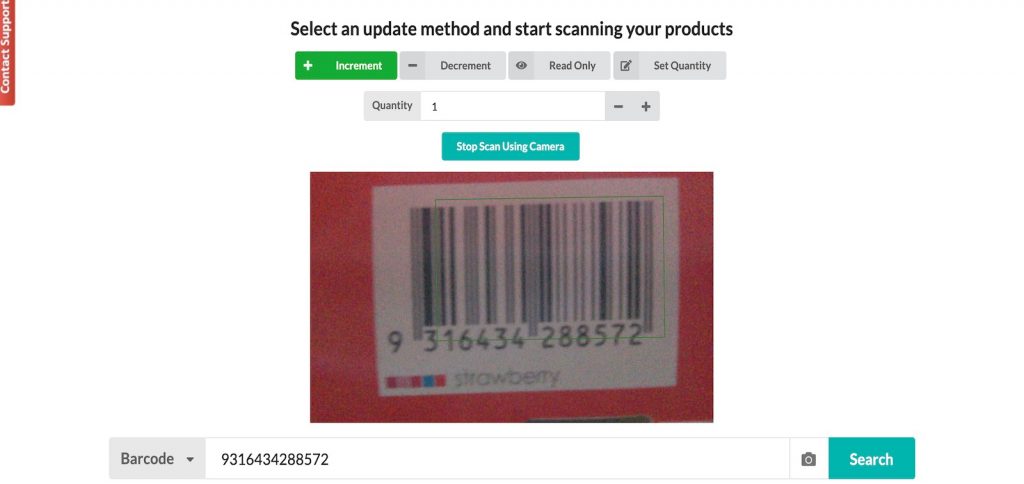
Quick Scan allows you to create barcodes for your goods, making tracking and updating your inventory much easier. It works with any barcode scanner and allows you to create orders just by scanning a product’s barcode.
Quick Scan starts from $5/month
Stocky
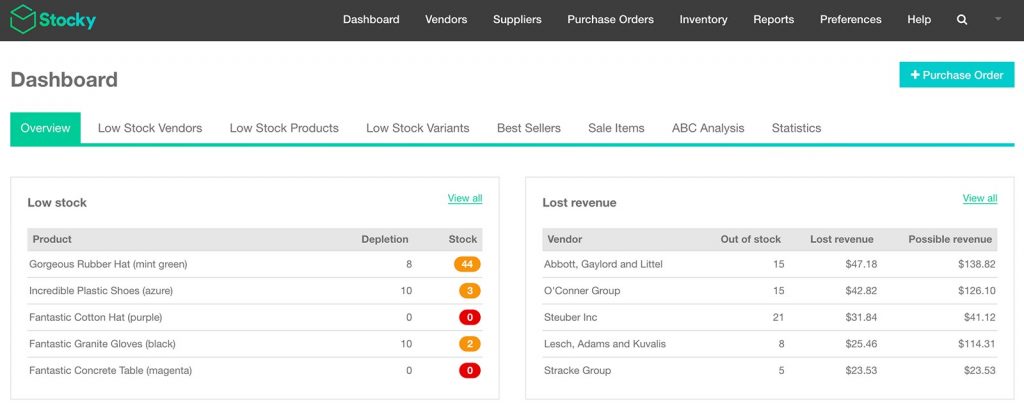
Stocky is actually Shopify’s own inventory management extension. It helps you manage inventory ins and outs, keep out-of-stock merchandise out of sight, keep track of purchase orders, and communicate more effectively with suppliers and vendors.
It also lends an analytical hand by giving you insight into what sells and what does not, and by allowing you to forecast demand based on your sales.
Stocky is free, but only available to Shopify POS users.
QuickBooks Commerce
QuickBooks Commerce is a business management platform that has grown out of accounting software. Having recently bought TradeGecko, QuickBooks now allows users to handle inventory and order management, and also has some functionality for manufacturers – a BOM management module, for example.
It is a good and easy-to-use platform for inventory management, but does not solve many problems for manufacturers.
QuickBooks Commerce starts from $39/month
Conclusion
Opening up a store in Shopify is easy, but managing its inventory might prove to be difficult when you are looking to develop a proper business. Even though Shopify has its own inventory management solutions on offer, they will lose their usefulness as a business’s need for different functionalities grows.
Luckily, Shopify knows that their solutions do not meet the requirements of larger stores and those that manufacture their own products. That is why they have partnered up with other, third-party software providers.
You may also like Procurement Management – A Quick Guide for Small Manufacturers.




